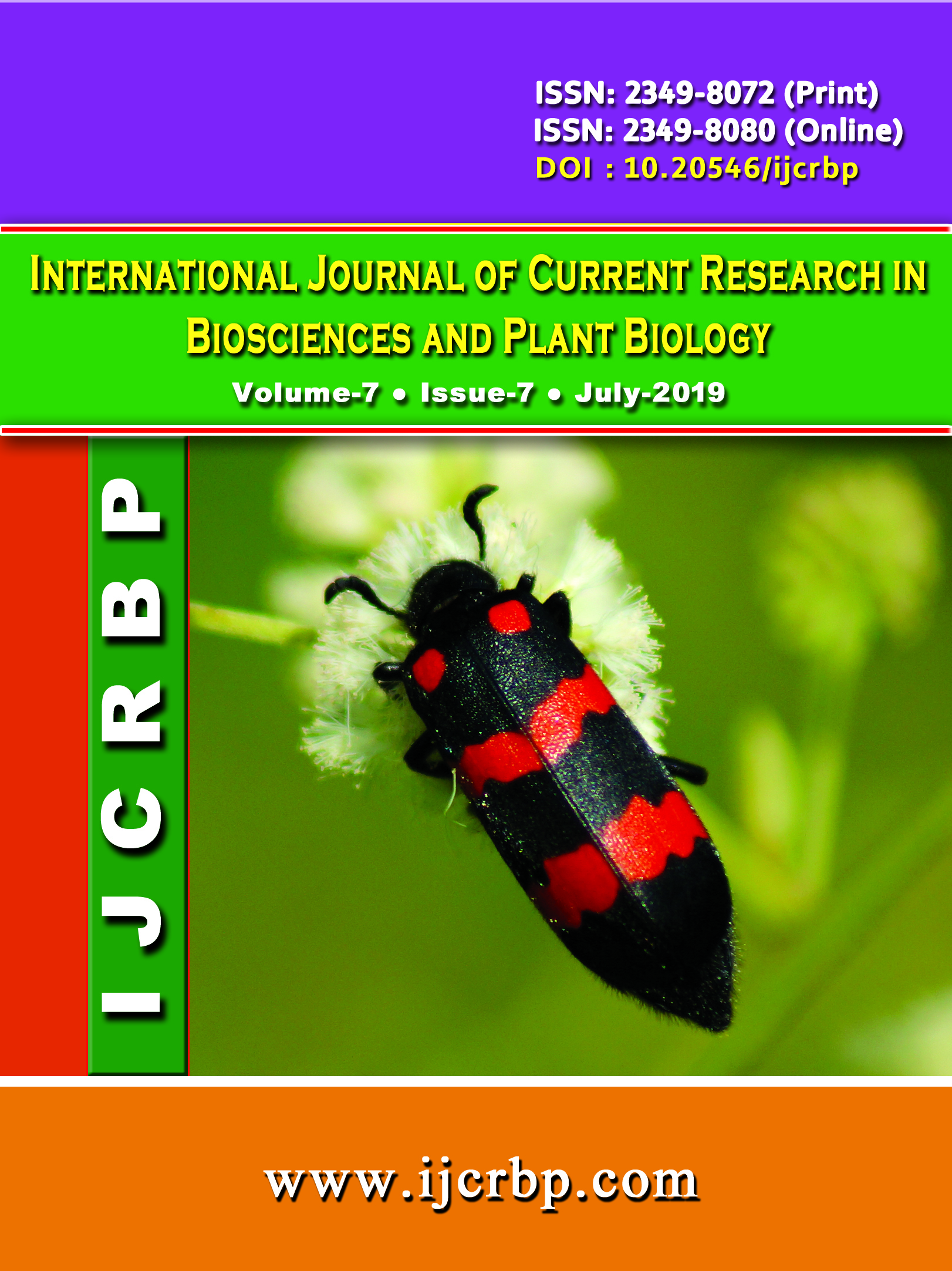 |
Online ISSN : 2349-8080 Issues : 12 per year Publisher : Excellent Publishers Email : editorinchiefijcrbp@gmail.com |
2Department of Plant Biology, Faculty of Science, University of Yaoundé I, P. O. Box 812 Yaoundé, Cameroon
3Faculty of Medicine and Pharmaceutical Science, University of Dschang, P. O. Box 96 Dschang, Cameroon
4Faculty of Science, University of Bangui; Martyrs Avenue P. O. Box 1450 Bangui, Central African Republic
5Laboratory of Plant Biology, Higher Teachers’ Training College, University of Yaoundé I, P. O. Box 47, Yaoundé, Cameroon
This survey articulates around three aims : (1) to characterize the mountain vegetation of Mount Kupe (1 500-2 064 m altitude) of south western Cameroon, (2) to study the vegetation structure and woody species diversity in the Kupe mountain forest, and (3) to compare ours results with those of other tropical mountain forests. A quantitative inventory was realized on trees with diameter at breast height (DBH) ≥ 10 cm covering a cumulative surface of 2.125 ha, from 17 rectangular plots of 50 m x 25 m (1 250 m²). Standard methodology to calculate floristic diversity was employed. A total of 1819 trees belonging to 136 species, 83 genera and 42 families were recorded with a total basal area of 193.75m² per hectare. Most trees had a height between 10 and 15 m and diameter of 10-40 cm. However some individuals reached heights of 25 to 30 m. Ten species namely Beilschmeidia acuta (1 individual), Carapaoreophila (3 individual), Cola acuminata (3individual), Entandrophragma angolense (1 individual), Loesenara talbotii (3 individual), Santiria trimera (2 individuals), Schefflera barteri(3 individuals), Syzugium staudtii (2 individuals), Trichilia procera (3 individual) and Zenkerella citrina (1 individual) had a diameter of 165-170. Thirty-seven plant species then 27.21 % were represented by only one individual. The forest is marked by the abundance of Rubiaceae, Sapindaceae, Celastraceae, Euphorbiaceae, Meliaceae, Moraceae, Anacardiaceae and Leguminosae. The analysis of the floristic groupings has been made on the basis of the partition of the samples by Detrended Correspondence Analysis (DCA) and an Ascending Hierarchical Classification. The Kupe mountain forests presents five major plant sets: the heterogeneous high altitude forest of the northeastern zone with little disturbance, the mountain rainforest of the summit part of Allophylus bullatus and Carapa oreophila, the submontane rainforest southwesterly at the floor of the mountain storey, the edaphic forest hydromorphic soils (core of valleys forest) corresponding to areas more disturbed by human activities and the mature secondary forest of the eastern margin. A new association Allophylo-Carapetum oreophilae has been described. The presence of certain species such as Leea guineensis, Laccodiscus ferrugineus, Rutidea glabra and Tarenna eketensis shows that the present site of Mount Kupe was originally a marshy area that has been subjected to orogenesis over the years. The fundamental floristic nucleus of the forest is composed of ombrophilous species before the successional stages.
